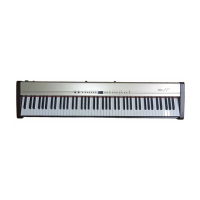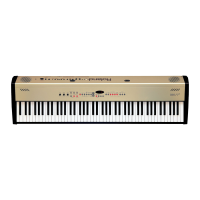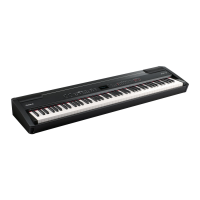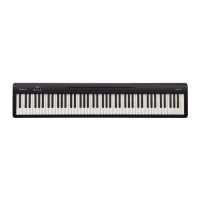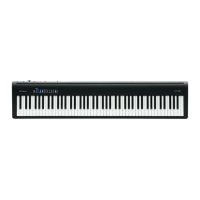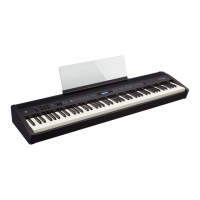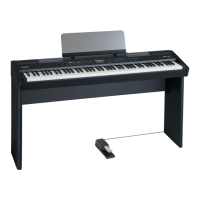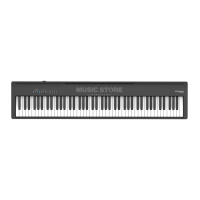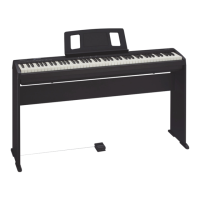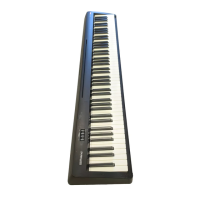Thank you, and congratulations on your choice of the Roland Digital Piano FP-3.
Main Features
Stylish, Light, Compact Design
The refined design fits in anywhere; and since it is so lightweight and compact, it’s
easy to take the instrument with you wherever you go.
Authentic Piano Performances
High-quality concert grand piano tones, along with the Progressive Hammer Action
keyboard, which gives more realistic piano touch by providing a heavier feel in the
low end and a lighter feel in the upper notes, let you enjoy truly authentic piano
performances.
Wide Variety of Tones For Use in Many Musical Genres
In addition to piano tones, the FP-3 offers 40 different onboard tones, which can be
used for almost every conceivable style of music.
You can also play Drum Sets with the instrument.
“Session Partner” Lets You Enjoy Playing with a Session-Like Feel
Enjoy true session-like feel while performing along with a “Rhythm” section built
upon realistic drum and bass sounds.
You can have the “Rhythm” chord progression advance automatically, or you can
specify the chords to be played with your left hand.
Numerous Internal Songs
The FP-3 features four internal demo songs, along with a further fifty internal piano songs.
Experience a Variety of Performances with Dual and Split Functions
Layer two of the FP-3’s many internal tones, play with different tones assigned to the
left and right sections of the keyboard, and enjoy many other possibilities in working
with Performances.
Keyboard Touch Can Be Set to Match Finger Strength
You can change the keyboard touch so it better suits the finger strength of the person
playing the keyboard.
Easy Recording Functions
You can easily record your own performances using simple button operations.
Two Headphone Jacks Provided
The FP-3 comes equipped with two headphone jacks, allowing two people to use
headphones simultaneously.
This is a convenient feature for use in lessons, or when playing pieces for four hands.
Includes Line In/Out Jacks
By connecting external audio equipment to the FP-3’s Line Out jacks you can play
sounds from the FP-3 through your audio setup, and with a CD player or other such
device connected to the Line In jacks, you can then play internal sounds along with
FP-3 Performances.
Owner’s Manual
Copyright © 2000 ROLAND CORPORATION
All rights reserved. No part of this publication may be reproduced in
any form without the written permission of ROLAND CORPORATION.
®
Before using this unit,
carefully read the sections
entitled:
“USING THE
UNIT SAFELY” and
“IMPORTANT NOTES”
(p. 2; p. 4)
. These sections
provide important
information concerning the
proper operation of the unit.
Additionally, in order to feel
assured that you have
gained a good grasp of every
feature provided by your
new unit, Owner’s manual
should be read in its
entirety. The manual should
be saved and kept on hand
as a convenient reference.
